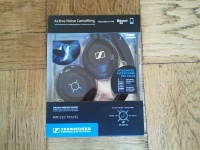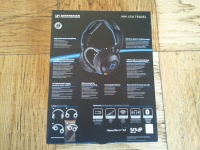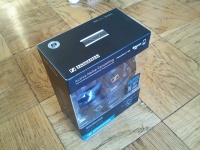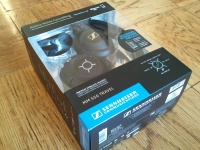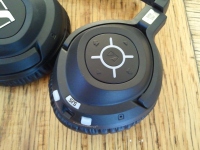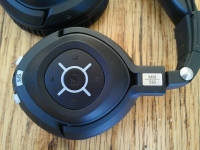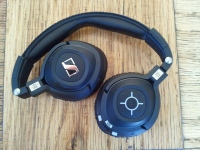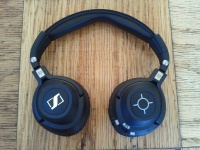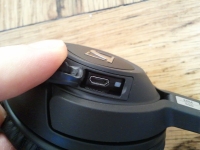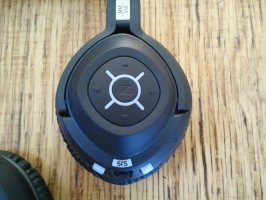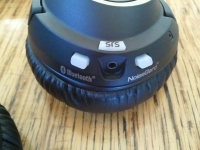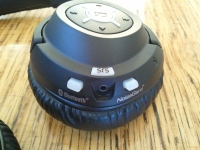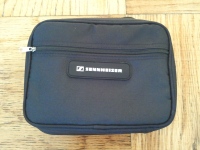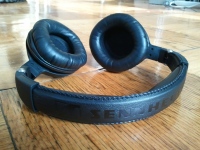TheONbutton offers computer services in Durham NC
Hello Everyone,
I’ve loved writing at TheONbutton, and the time has come to turn it into something new. With that in mind I’ve refocused TheONbutton to offer computer services in Durham NC and the Triangle.
The aim of theONbutton is to help customers as quickly, professionally and cost-effectively as possible. We help, we fix, we teach.
theONbutton is open seven days a week, and we love making customers happy! So if you live in Durham NC or the Triangle area, contact us because we’d love to help you!
All the best,
Neil Berman
Virgin Mobile Motorola Triumph Android smartphone review
New updates added at the bottom of the review!
Additional updates added in the comments…all is not well with the Triumph :(
Further update: After returning my original Triumph, I returned my second one as well and have gone back to the Optimus V. After a few days of usage I found that there were too many basic issues with the Triumph. Details in the comments at the end of the review…
The Motorola Triumph has been one of the most anticipated smartphone of 2011. This Android-powered slate phone is Virgin Mobile’s most advanced smartphone to date and takes the prepaid market forward with a respectable 1GHz Snapdragon processor, 4.1 inch screen and 5 megapixel, 720p HD video-capable camera. The Motorola Triumph bests Virgin Mobile’s current Android flagship, the LG Optimus V, which we reviewed previously. It’s also more expensive at $299 upfront with no contract on Virgin Mobile’s Beyond Talk prepaid plans. So can the prepaid market support a premium Android smartphone like the Motorola Triumph? Here’s our review…
First impressions of the Motorola Triumph
While the original release date for the Motorola Triumph was July 19th, my local Radio Shack was happy to sell me one yesterday. Lucky me! The Motorola Triumph comes in Virgin Mobile’s now familiar easy-open packaging, which houses the smartphone, a two-piece charger/USB cable, a battery, a quick start guide and a MicroSD card adapter. There is a 2GB MicroSD card pre-installed in the phone, which should be sufficient to hold a fair amount of music, photos and videos at least initially. The MicroSD card is removable which makes it easy to install a higher capacity card if desired.
 The Motorola Triumph has a minimalist look with few frills. The casing is made of dark gray textured plastic and the four inch capacitive touchscreen dominates the front of the smartphone. The four standard Android buttons below the screen are also capacitive. There’s a forward facing video camera above the screen to the left of the earpiece for video calls.
The Motorola Triumph has a minimalist look with few frills. The casing is made of dark gray textured plastic and the four inch capacitive touchscreen dominates the front of the smartphone. The four standard Android buttons below the screen are also capacitive. There’s a forward facing video camera above the screen to the left of the earpiece for video calls.
Around the sides are volume buttons, an on/off button, micro USB port for charging and data transfer and a mini HDMI port for connecting the Motorola Triumph to an external monitor or TV. Nice. Unfortunately an HDMI cable is not included in the box however. The back of the Motorola Triumph houses its 5 megapixel camera which also serves as a 720p HD video camera, and there’s an LED flash as well. There is no dedicated camera button, the camera is activated by launching the camera app.
The Motorola Triumph feels light for a smartphone with a four inch screen. At 5.04 ounces it’s easy to carry in a trouser or coat pocket without feeling uncomfortable, although it might weigh down a shirt pocket. While the Motorola Triumph is a little plasticky and lacks a premium feel, I like the clean lines of the device; the screen almost stretches to the edges, the back is flat and the phone is pleasingly thin. It’s a simple minimalist design.
Using the Motorola Triumph
Like Virgin Mobile’s LG Optimus V, the Motorola Triumph ships with Android 2.2 with hardly any carrier modifications, which is great for those looking for a stock Android smartphone. There are a few preloaded Virgin Mobile apps and wallpapers, but nothing intrusive. Sync’ing with Google services works as expected, and I haven’t found any blocked applications so far. For example, Skype installed properly and I was able to make a call over WiFi although I haven’t tried making a 3G Skype call yet.
In general operation the Motorola Triumph’s 1GHz Snapdragon processor makes the smartphone feel more snappy than the LG Optimus V, which is clocked at 600MHz. The Motorola Triumph also has far more onboard memory at 512MB, which definitely helps to keep the device humming along smoothly. The larger screen size and faster processor of the Motorola Triumph may however lead to worse battery life than the LG Optimus V. It’s early days yet and I’ll update this review with my experience of the smartphone’s battery life after more regular usage.
The Motorola Triumph paired quickly with the Bluetooth hands free and stereo headphone devices that I’ve tried so far. For stereo Bluetooth fans, the Motorola Triumph supports A2DP for stereo audio streaming and AVRCP for remote control over playback. I was able to control Pandora’s play and skip controls using a stereo Bluetooth headset.
As with the LG Optimus V, I was unable to use a Bluetooth headset on the Motorola Triumph for a Skype call. I’m not sure if this is possible on any Android smartphones at present, has anyone successfully managed to do this…?
The 5 megapixel camera on the Motorola Triumph produces respectable photos that in my opinion are easily good enough for casual use. If your primary camera usage is snapping general photos and uploading them to social networking sites like Facebook or taking casual vacation shots, then you could probably leave your point & shoot camera at home if you have the Motorola Triumph. It’s definitely a step up from the 3 megapixel camera on the LG Optimus V. I will post some photos that I took using the Motorola Triumph using its out-of-the-box settings, stay tuned!
The video camera also does a decent job. There is no image stabilization, but video come out looking absolutely fine for a mid-range device. Bear in mind that shooting 720p HD video requires a lot of storage space, so upgrading the supplied 2GB MicroSD card to a larger size might be advisable for budding directors.
Downsides to the Motorola Triumph are difficult to fully capture at this stage. I’m still only on day two with the device and I’ll add to this review as I continue to use it. So far I’ve only been using the Motorola Triumph on WiFi, so I haven’t made calls using it yet apart from Skype, although I have no reason to expect that it would have problems making regular calls!  The microphone, earpiece and speaker worked well on Skype and I will update the review if I encounter any issues with network calls. In particular I’d like to add an idea of battery life after more consistent usage and I’ll also report back on whether the device starts to exhibit slow-downs and other performance side-effects that sometimes appear after time with smartphones.
The microphone, earpiece and speaker worked well on Skype and I will update the review if I encounter any issues with network calls. In particular I’d like to add an idea of battery life after more consistent usage and I’ll also report back on whether the device starts to exhibit slow-downs and other performance side-effects that sometimes appear after time with smartphones.
The main issue I’ll raise now though is the price. At $299 the Motorola Triumph is not an impulse purchase, but it does offer good value compared to having a two year contract. Virgin Mobile has also just changed its Beyond Talk pricing, which now costs $35 for 300 minutes and unlimited data & texts (previously $25), rising to $45 for 1200 minutes (previously $40) and $55 for unlimited talk time (down from $60 previously). Virgin Mobile also just announced that it will throttle users down to 256kbps if they exceed 2.5GB of data usage in a month. While 2.5GB is more than enough data for many users, it’s disappointing to see Virgin Mobile adopting throttling especially when its parent company (Sprint) has not announced similar restrictions for Sprint customers on the same network.
It’s also worth mentioning that the Motorola Triumph ships with Android 2.2 Froyo rather than the latest version of Android, which is 2.3 Gingerbread. I forgave the LG Optimus V for this since Gingerbread was still fairly new when that device launched. However Android 2.3 has now been out for a long time and new devices should really have the latest version of the operating system installed when they ship. This is a big issue compared to the iPhone, or a laptop computer which will pretty much always ship with the latest version of its platform’s operating system.
Also, for those of you who like to use your phone outdoors, the screen of the Motorola Triumph is virtually illegible in sunlight. This is in keeping with many devices out there, and the screen is viewable outdoors in the shade.
On balance the Motorola Triumph works out well compared to a similarly spec’d smartphone on contract. Even though the price just increased by $10 each month, light voice minute users will still do well on Virgin Mobile’s $35 plan over two years compared to a similar voice & data contract on other carriers. The other plans are also good value. Remember that if you ever decide to stop using Virgin Mobile, there is no early termination fee and you can sell your phone to recoup some of the purchase cost. Just be sure to completely wipe the device of any personal data before selling it or passing it on to someone else.
So in that light, the $299 upfront cost is not quite so bad. At least that’s what I talked myself into when I bought the Motorola Triumph yesterday! In my two days of usage, the Motorola Triumph certainly seems like a solid contender and may well encourage those on contract to consider taking up the flexibility and lower overall cost of Virgin Mobile’s plans. The Motorola Triumph might not have some of the frills of the current top end smartphones, but it should easily meet the needs of many users and then some. Things sure have changed in the prepaid world.
Some updates:
I’ve been using the Motorola Triumph for a few days now and noticed a couple of things. Battery life seems good overall, I’m easily able to get through a day with moderate usage. Network signal on my Triumph is weak, definitely weaker than the LG Optimus V. There have also been a couple of occasions where I had to reboot the Triumph because it failed to re-find a signal for a prolonged period of time. The Bluetooth implementation has also been buggy for me so far. The Triumph either routinely refuses to connect to devices it has paired with previously, or it takes a long time to connect with them. Bluetooth signal drops are frequent.
On the whole it’s been an enjoyable phone to own so far, but cell radio problems and Bluetooth issues should not be present in a $299 smartphone in 2011. There’s nothing worse than having no bars when your friends have lots!
Additional updates in the comments…all is not well with the Triumph :(
Further update: I have gone back to using the Optimus V, the Triumph’s issues became too frustrating in day to day usage. Details in the comments…
Neil Berman
This gadget life: Tomtom traffic avoidance
I recently made a thousand mile road trip over three days for a three hour meeting. Sounds like a crazy idea, but instead of flying we I decided a road trip might be fun. Might.
On such a long drive many things can go wrong, apart from the car itself. One can get lost, have an argument over getting lost, get stuck in traffic and become stressed about time. The last thing we wanted was to drive all that way and miss the meeting.
So we set out on our journey in a shiny 2011 Nissan Sentra from an unnamed hire company with my Tomtom 340XL TM. This was my first experience of using a GPS in skyscraper-filled Manhattan, and it took the Tomtom about two minutes to lock onto satellites. In case you’re not familiar with GPS devices, that’s a long time. The Tomtom normally locks on within seconds.
The lock came and went as we traversed roads lined with impossibly tall buildings, and after leaving them in our wake all was well. That’s when the T bit of the 340XL TM name came into its own.
The T stands for Traffic and means that this 340 shipped with Tomtom’s traffic receiver. This is an antenna that the 340 uses to listen for traffic updates broadcast over the airwaves and the device then redirects you to avoid delays. It worked amazingly well.
We were leaving New York City at a notoriously bad time of day for traffic but the Tomtom did a superb job of avoiding the jams. We actually didn’t sit in any snarl ups at all, as the Tomtom rerouted us time and again promising to save us ten minutes here and fifteen there.
So, hours of driving later we arrived at our destination. Stress-free, argument-free and frankly downright impressed.
Neil Berman
This gadget life: The lack of Flash on the iPad
 The lack of Flash on the iPad really came home to me this week.
The lack of Flash on the iPad really came home to me this week.
I’ve been using Zillow to do some house hunting. Zillow has a dedicated iPad app, which is why I use it instead of Trulia.com or Realtor.com. The Zillow app is a good experience on the iPad, not groundbreaking, but totally solid.
For the uninitiated, using the app is simply a case of manipulating a Google Maps pane on the left of the screen to display properties details on the right. There are search filters, market data for the property being viewed and a photo viewer.
I tried the regular Zillow site on a laptop this week. I won’t say whether it was a PC or Mac, but the experience was significantly worse. The site was slow to load, Flash crashed twice and the search information was presented in a less friendly way compared to Zillow’s iPad app, which is optimized for the iDevice’s screen resolution. I went straight to Trulia.com.
The messages I take from this (admittedly singular) example are as follows. I find that I almost always use dedicated iPad apps rather than a browser where possible. If there are competing sites providing similar information I will almost always use the one that has a dedicated iPad app if I’m using my iPad. Lastly I’m glad for the first time that the iPad doesn’t support Flash because I think its omission has encouraged sites to create good dedicated apps. Zillow is a case in point.
Neil Berman
Virgin Mobile LG Optimus V review
 In case you didn’t get the memo, Android is getting big. Ahem, ok so that’s an understatement, the platform is becoming hugely popular in the smartphone world as a competitor to Apple’s iPhone. Previously the preserve of monthly contract plans, some no-contract carriers now offer Android smartphones for a song, dance and some green. Virgin Mobile just launched the LG Optimus V Android 2.2 smartphone for an upfront cost of $149.99, and is asking for a measly $25 for a month’s worth of unlimited data, texts and 300 voice minutes. Is this the craziest deal of all time, or is the phone perhaps a stinker? To find out I scoped out seven (!) Radio Shacks until I found one with the smartphone in stock, and then I bought the sucker. Here’s my review after two weeks of daily usage.
In case you didn’t get the memo, Android is getting big. Ahem, ok so that’s an understatement, the platform is becoming hugely popular in the smartphone world as a competitor to Apple’s iPhone. Previously the preserve of monthly contract plans, some no-contract carriers now offer Android smartphones for a song, dance and some green. Virgin Mobile just launched the LG Optimus V Android 2.2 smartphone for an upfront cost of $149.99, and is asking for a measly $25 for a month’s worth of unlimited data, texts and 300 voice minutes. Is this the craziest deal of all time, or is the phone perhaps a stinker? To find out I scoped out seven (!) Radio Shacks until I found one with the smartphone in stock, and then I bought the sucker. Here’s my review after two weeks of daily usage.
 Virgin Mobile is shipping the LG Optimus V in a cardboard easy-open container, which is a welcome change from the sealed plastic ones used for previous models. Inside the box you’ll find the phone itself, a two piece USB charger (a cable with a separate plug attachment), headphones with handsfree capability, battery and manual.
Virgin Mobile is shipping the LG Optimus V in a cardboard easy-open container, which is a welcome change from the sealed plastic ones used for previous models. Inside the box you’ll find the phone itself, a two piece USB charger (a cable with a separate plug attachment), headphones with handsfree capability, battery and manual.
For a budget smartphone, the LG Optimus V is a real looker. The main body of the phone is made of two soft touch pieces of black plastic that appear more premium than they sound. Between them across the top of the phone is what looks and feels like a brushed aluminum strip that houses the power button, headphone socket and volume controls. Further down the sides of the LG Optimus V are dedicated buttons for the camera and voice commands, as well as a slot for a Micro SD memory card. A USB charging port sits on the bottom of the smartphone.
The upscale look continues on the front of the LG Optimus V with the four standard Android buttons encased by shiny silver surrounds. It’s good to see hardware buttons rather than the software buttons of some Android devices that only light up when the phone is in use. Around the back things get a little cheaper looking, although it’s difficult  (and also less important) to make a phone’s battery cover look impressive. The back is simply a plastic cover with a cutout for the speaker and a silver surround for the camera. Can’t get excited about that, it looks okay, but you’ll spend more time looking at the front anyway.
(and also less important) to make a phone’s battery cover look impressive. The back is simply a plastic cover with a cutout for the speaker and a silver surround for the camera. Can’t get excited about that, it looks okay, but you’ll spend more time looking at the front anyway.
In a world where most smartphones look pretty much the same, the LG Optimus V fits right in. So while the LG Optimus V is a budget device, most people looking over your shoulder would never know it.
In terms of interior specs, the LG Optimus V sports a 600MHz processor, 320×480 pixel capacitive touchscreen, Bluetooth 2.1 including A2DP & AVRCP for music streaming and remote playback control, a 3.2 megapixel camera without flash, A-GPS, WiFi and the whole shebang weighs in at 4.6 ounces (130 grams).
The LG Optimus V carries Google’s ‘with Google’ branding, so I was hoping for a pretty vanilla Android experience…and that’s pretty much what I found. From what I could see, apart from a couple of Virgin Mobile apps, the LG Optimus V appears to be running something very close to stock Android 2.2. So far all the apps I’ve downloaded from the Android Market have worked perfectly, such as Skype, Pulse and my new personal fave Google Translate. Bear in mind you can only make Skype calls over WiFi with the LG Optimus V.
 Even though the LG Optimus V doesn’t have the fastest processor on the planet I found the 600MHz CPU to be perfectly capable as a daily driver for the phone. In my mixed usage of email, browsing, YouTube, streaming audio over Bluetooth and playing Angry Birds, I only occasionally noticed hangs or delays. The LG Optimus V has generally been reliable, although it has spontaneously restarted itself twice in my two weeks of usage.
Even though the LG Optimus V doesn’t have the fastest processor on the planet I found the 600MHz CPU to be perfectly capable as a daily driver for the phone. In my mixed usage of email, browsing, YouTube, streaming audio over Bluetooth and playing Angry Birds, I only occasionally noticed hangs or delays. The LG Optimus V has generally been reliable, although it has spontaneously restarted itself twice in my two weeks of usage.
One welcome addition in the LG Optimus V is that it ships with Swype installed. This allows for fast typing by moving your finger across letters on the smartphone’s virtual keyboard. I was impressed with Swype on the Samsung Epic 4G and it’s all the more useful on the LG Optimus V since the Optimus lacks a hardware keyboard. Swype isn’t perfect by any stretch of the imagination, but it’s definitely competent. I wrote this whole review on the LG Optimus V using Swype.
The screen on the LG Optimus V is not super high-res, but at 320×480 it’s dense enough for 3.2 inches of real estate, and I’ve found it to be perfectly usable. Then again, I’m not the kind of person who’s going to get out a magnifying glass and complain if I can see individual pixels. More importantly the screen can be cranked up to be up bright enough to be legible outdoors for occasional things like checking Google Maps or sending texts. Wearing polarized sunglasses also helps to minimize screen reflections when trying to read the LG Optimus V’s screen on sunny days.
 One thing I absolutely love about the LG Optimus V so far is its battery life. I’ve found it easy to get through a day with regular usage. I don’t spend all day on my phone mind you, but I do have it set up to pull email from multiple accounts regularly, stream music during my commute and update various feeds in the background. It’s refreshing to not have to turn off things like Bluetooth and background services during the day just to make sure I have enough juice for my journey home. Your mileage may vary though depending on how you use the LG Optimus V.
One thing I absolutely love about the LG Optimus V so far is its battery life. I’ve found it easy to get through a day with regular usage. I don’t spend all day on my phone mind you, but I do have it set up to pull email from multiple accounts regularly, stream music during my commute and update various feeds in the background. It’s refreshing to not have to turn off things like Bluetooth and background services during the day just to make sure I have enough juice for my journey home. Your mileage may vary though depending on how you use the LG Optimus V.
I’m guessing this power efficiency comes from a few factors. Firstly, the LG Optimus V has a slower processor than the 1GHz+ CPUs on the top end juice guzzling smartphones. Secondly, backlighting the LG Optimus V’s 3.2 inch screen probably uses less power compared to backlighting a 4+ inch screen on larger smartphones. Lastly the LG Optimus V uses 3G rather than 4G, which tends to require a lower power draw from the radio.
On that subject, I’ve seen some forum discussions questioning whether the LG Optimus V is restricted to 1x RTT. I can happily confirm that the LG Optimus V uses 3G where possible and downgrades to 1x RTT if the 3G signal is too weak.
In terms of connection speeds, in downtown Manhattan I’ve been experiencing download speeds that I think are fine for a phone with a smallish screen. In terms of specifics, I’ve measured consistent download speeds of around 1.1Mbps and upload speeds of around 0.4Mbps. For app downloading, watching HQ YouTube videos and listening to Pandora, that kind of speed is absolutely fine. It’s worth checking coverage in your area before you take the plunge though, and bear in mind that Virgin Mobile uses Sprint’s network. So if your area has good Sprint 3G coverage then

The Optimus V captures a decent amount of detail on this indoor shot of Halo with good ambient lighting
you should be fine. Having said that, Virgin Mobile does have a 30 day return policy, so you could always take advantage of that if you’re not happy.
There are a couple of downsides to the LG Optimus V. Firstly, it’s camera is okay for quick snaps but nothing to write home about . It only has a 3.2 megapixel sensor and lacks a flash, so photos in well lit environments come out far better than those taken in dimly lit rooms. I’d really like to see a decent 5 megapixel sensor with a flash as standard on all smartphones. Secondly although the LG Optimus V can record video, it’s not capable of capturing HD footage. Again, I think being able to shoot in 720p should soon be the minimum for smartphones. Lastly the LG Optimus V only ships with a 2GB Micro SD card, so it’s worth setting aside some extra green if you need more storage for your extensive music collection. Given the LG Optimus V’s price though, these issues are easily forgiven since on balance this smartphone is far more capable than its price would indicate.
Check out our review of the new Virgin Mobile Motorola Triumph!
Overall I’ve been seriously impressed with the Virgin Mobile LG Optimus V. It handles run-of-the-mill smartphone tasks competently, looks good and is cheap to run. I was worried that the LG Optimus V might be a let down because of its low price, but in reality it’s possibly the best smartphone value on the US market today.
Neil Berman
OnStar Skype and Internet concept
Looking back through my gigabytes of CES footage, I stumbled across this cool vid that I hadn’t previously posted. There was a handsome new shape Buick Lacrosse at Verizon’s booth that OnStar had decked out with all kinds of gadgety funkiness. The Lacrosse had a built-in Verizon’s 4G LTE modem with tricked out software that allowed the navigation screen to pull data from the Internet such as headlines and YouTube vids. Perhaps even more amazing were the exterior cameras that captured a collision to help catch the perp, and an interior camera for live Skype video calling. It’s just a concept for now, but this all looked pretty much ready for primetime. Here’s hoping!
Neil Berman
Taking the fight to recessed headphone sockets
 As many previous iPhone owners discovered, recessed headphone sockets are a pain. It’s difficult to find headphones with a plug slim enough to fit into a recessed socket and a market sprang up for ungainly adapters. I’ve experienced this pain first hand with my excellent Panasonic RP-HC500 noise canceling headphones. The RP-HC500 is one of the best sets of noise canceling cans ever made, crushing comparable Bose QCs on build and sound quality in my opinion. But while I love detachable cords since they preserve the lifespan of good headphones, the RP-HC500 has a recessed socket.
As many previous iPhone owners discovered, recessed headphone sockets are a pain. It’s difficult to find headphones with a plug slim enough to fit into a recessed socket and a market sprang up for ungainly adapters. I’ve experienced this pain first hand with my excellent Panasonic RP-HC500 noise canceling headphones. The RP-HC500 is one of the best sets of noise canceling cans ever made, crushing comparable Bose QCs on build and sound quality in my opinion. But while I love detachable cords since they preserve the lifespan of good headphones, the RP-HC500 has a recessed socket.
One day I came home to find that my cats had ripped through the RP-HC500’s cable, leaving me with a dilemma. Unfortunately I couldn’t find any cheap off-the-shelf replacement cables that will fit a recessed socket. So I could either pony up the ridiculous $20+tax+shipping for Panasonic’s official replacement cord or tell my cats to fix it before their next feed. Since I reckoned my cats’ cord cutting abilities were superior to their repair skills, it looked like I’d have to hand over the cash.
That was when the DIY bug bit me. I had some 3.5mm stereo male to stereo male cords lying around,and I wondered if I could trim them down to size. Out of the box they were too big to fit, but I hoped that between a Stanley knife and some delicate carving I could fashion a $2 replacement.
It actually turned out to be a five minute job and my RP-HC500s are now singing again, ready to make plane journeys a pleasure once more. See, we’re not such a throwaway generation after all!
Here’s the warning: I don’t recommend doing this at home because it’s easy to wreck your cord, plug and fingers. But if you’re a risk taker and choose to ignore my warnings, be careful not to cut all the way through the plug’s casing. Also, the RP-HC500’s cord plug was rubber, which made it possible to carve the plug; I don’t think I would have seen a successful outcome if the plug had been made of hard plastic or metal!
Neil Berman
Verizon, 4G LTE and the iPhone
Just a few short years ago AT&T had the iPhone on the fastest 3G network and Verizon had, well, a line-up of forgettable devices. There was not a Droid in sight in Verizon’s range, let alone an iPhone, and the idea of a superfast LTE rollout was a pipe dream.
Fast forward to 2011 and the tables have well and truly turned. At CES Verizon kicked it out of the park with some well endowed smartphone and tablet devices, along with amazing LTE speeds and it looks like the carrier may announce tomorrow that it will start selling the iPhone.
It could be a fantastic year for Verizon. LTE really is barnstormingly fast and if a CDMA iPhone does get announced tomorrow I think it makes sense for one simple, but not immediately apparent, reason.
We all know that AT&T’s network suffered badly when the iPhone came along, due to the amount of data its users were consuming. Specifically AT&T called out a small percentage of data intensive users who were proportionately pulling far more data than other consumers. So we would expect the same thing to happen to Verizon, right?
I don’t think so, and not because Verizon’s network is impervious. Rather, I expect many of the more demanding data consumers will trade up to Verizon’s new LTE network because the speeds are so much faster. This migration would free up significant capacity on the carrier’s CDMA network, allowing space for iPhone users to pull data at good speeds.
So if Verizon does announce a CDMA iPhone tomorrow, I think the arrival of LTE has given Verizon the confidence to do so.
Neil Berman
Is the Motorola Atrix a computing game changer?
 Of all the smartphones announced at CES, the Motorola Atrix could have the potential to be a truly game changing device…but not for the most obvious reasons.
Of all the smartphones announced at CES, the Motorola Atrix could have the potential to be a truly game changing device…but not for the most obvious reasons.
Like its newly announced competitors the Atrix sports a dual-core processor, 1080p video playback and a slick form factor. Where the Motorola Atrix stands out though is its integrated Citrix thin client software and built in apps that turn the Atrix into a computer when docked.
 What do I mean by docked? There are two Motorola dock accessories for the Atrix. One is a desktop dock with three USB ports, one HDMI port and a charging port. This allows the Atrix to connect to a monitor, keyboard and mouse.
What do I mean by docked? There are two Motorola dock accessories for the Atrix. One is a desktop dock with three USB ports, one HDMI port and a charging port. This allows the Atrix to connect to a monitor, keyboard and mouse.
The second accessory is a dumb laptop that has a built-in dock behind the screen. When the Atrix is docked in the dumb laptop, it acts as the brain for the laptop and the same desktop apps become available for use.
What are these apps? Most importantly there’s a Firefox browser with full Flash capability, and since the Atrix is powered by Nvidia’s Tegra 2 platform Flash works really well. There’s also a built-in Citrix app for using the Atrix as a thin client for virtual Windows 7 desktop environments. This is similar to the Citrix Nirvana concept from a while ago, but this time it’s a production device in the hands of real users.
 Since the Atrix connects via HSPA+, the Atrix in connection with the laptop accessory or desktop dock could be a perfect traveling companion for mobile folks who want a lightweight always-connected experience. Plus, since the Atrix can be expanded to 48GB of internal storage, it has enough capacity to store significant amounts of local media and files too.
Since the Atrix connects via HSPA+, the Atrix in connection with the laptop accessory or desktop dock could be a perfect traveling companion for mobile folks who want a lightweight always-connected experience. Plus, since the Atrix can be expanded to 48GB of internal storage, it has enough capacity to store significant amounts of local media and files too.
The docking experience was seamless when I tried it out. When docked, the Atrix switched to show its desktop apps view on the external screen. The phone’s mobile view is also available as a window floating over the desktop windows, which shows text messages and other phone events.
The browsing experience was good, although pages did load a little slowly since AT&T’s coverage within the Motorola booth was weak. Once a page loaded however, scrolling worked fine and there’s a full screen mode as well.
I’m really excited about the Atrix, it’s the thin client I’ve been waiting for ever since I saw the Citrix Nirvana concept device. It will be interesting to see if the Enterprise adopts the Atrix for mobile staff. It would seem to be a perfect companion to a virtualized workplace where users carry the laptop accessory when traveling and dock the Atrix into the desktop dock in the office.
Neil Berman
BlackBerry PlayBook hands-on – Update: Now with video!
 I just scored some hands-on time with RIM’s answer to the iPad: the BlackBerry PlayBook tablet. Unlike the larger iPad, the PlayBook sports a 7″ screen but a faster dual core processor. The tablet’s construction feels good, as we would expect from RIM, and the touchscreen’s responsiveness is great. The bezel is also active, although it will be interesting to see whether or not this is a good idea after sustained use. I know I hold my iPad along the bezel all the time, and I wouldn’t want it to respond to my hand movements. For example, to
I just scored some hands-on time with RIM’s answer to the iPad: the BlackBerry PlayBook tablet. Unlike the larger iPad, the PlayBook sports a 7″ screen but a faster dual core processor. The tablet’s construction feels good, as we would expect from RIM, and the touchscreen’s responsiveness is great. The bezel is also active, although it will be interesting to see whether or not this is a good idea after sustained use. I know I hold my iPad along the bezel all the time, and I wouldn’t want it to respond to my hand movements. For example, to  bring up the open applications view, you swipe a finger upwards on the PlayBook’s bottom screen bezel.
bring up the open applications view, you swipe a finger upwards on the PlayBook’s bottom screen bezel.
What I saw was a pre-production unit, but the PlayBook’s performance was impressive. Multiple applications were open and simultaneously active, even in the task viewer. I would expect that kind of thing would be a battery destroyer, but it sure looked amazing. The PlayBook seems to be aimed at either being a home multimedia tablet, or an add-on for a BlackBerry. There didn’t seem to be a mail client actually on the PlayBook itself, and the BlackBerry rep said that the idea is to go to a browser to view email, or view it through a connected BlackBerry smartphone.
The PlayBook will share the BlackBerry App World, so I guess we might see dedicated email and other messaging apps coming out for the tablet. However I’d really like to see some dedicated messaging apps, as well as a promise of thousands of apps coming soon for the PlayBook. It’s launching in March, and if it’s just going to be positioned as an internet tablet with a BlackBerry hook-up, I fear it may get crushed in the consumer space by the iPad, and the wealth of apps that will likely start coming out for Android Honeycomb tablets like the Motorola Xoom.
Here’s the video of what went down…
Neil Berman
Steve Ballmer’s Microsoft CES 2011 keynote
 Steve Ballmer was on stage tonight for his traditional CES opening keynote. Here are some of the highlights:
Steve Ballmer was on stage tonight for his traditional CES opening keynote. Here are some of the highlights:
Netflix for Kinect is coming in Spring 2011. Hulu Plus for KINECT is coming too.
avatarKINECT: This looks pretty cool. The idea is that KINECT watches you and translates the face recognition and facial expressions it sees into an avatar, that you can use to chat with friends online. avatarKINECT is coming this Spring for free for Xbox Live Gold members.
 There are now 30 million Xbox Live members, and a new member joins every two seconds. Microsoft has sold over 50 million 360s worlswide. Over 8 million KINECT sensors were sold in the first 60 days.
There are now 30 million Xbox Live members, and a new member joins every two seconds. Microsoft has sold over 50 million 360s worlswide. Over 8 million KINECT sensors were sold in the first 60 days.
Fable Coin Golf is joining Halo Waypoint and Crackdown on Windows Phone 7.
Copy & Paste and app performance improvements are coming shortly. Sprint and Verizon will get Windows Phone 7 devices in the first half of 2011. Windows Phone 7 now has 5,500 apps, with 100 being added every day. There are also 20,000 registered developers for the platform. No sales figures were given for Windows Phone 7, make of that what you will.
Microsoft is selling 7 copies of Windows 7 every second. Windows Live has 500 million users and  Hotmail is still the largest email platform in the world. A selection of funky new laptops and tablets were then shown off, which you can check out in the gallery below. Microsoft had nothing significant to announce in the tablet space, that part of their strategy looks to be sorely lacking.
Hotmail is still the largest email platform in the world. A selection of funky new laptops and tablets were then shown off, which you can check out in the gallery below. Microsoft had nothing significant to announce in the tablet space, that part of their strategy looks to be sorely lacking.
The next version of Windows will run on Intel, AMD, ARM, TI OMAP, Nvidia Tegra and Qualcomm architectures. We saw the 1080p Ironman trailer running on the next Windows on a Tegra System-on-a-Chip and it was buttery smooth, with the ability to instantly seek within the trailer.
There’s also a new Surface PC with a technology called Pixelsense that turns every pixel into a sensor. Surface is still just for commercial uses, but as soon as I can get one in my living room as a coffee table I’ll be a happier gadgetlover.
Neil Berman
The lines of CES reflect Main Street’s new found love of gadgets
 …and I’m not talking about the ones on my face, which have practically doubled today. Press Day at CES is a frantic run from venue to venue, line to line, coffee to coffee. Every year I swear to skip this day long rush hour next year and each year I rejoin the throngs.
…and I’m not talking about the ones on my face, which have practically doubled today. Press Day at CES is a frantic run from venue to venue, line to line, coffee to coffee. Every year I swear to skip this day long rush hour next year and each year I rejoin the throngs.
I’m currently waiting for Steve Ballmer’s Microsoft keynote to start at the Hilton Center. It’s still two hours before the event, but there are a few hundred people here already. It seemed like there were a few thousand at Samsung’s event today by the time they shut the doors on the remaining liners citing fire codes.
I’ve been to the last four CES shows and I’m sure this year’s is by far the busiest, at least from a media coverage point of view. The volume of press releases for new products has been colossal and shows no sign of letting up, as you can grasp by stopping by a site like Engadget. Everything from the predictable tablet releases to the bizarre iGrill Bluetooth cooking thermometer has been announced this week. To give you an idea of the volume, I’ve been seeing around ten press releases an hour this week. That is huge.
This intensity is reflected in the amount of people covering CES and the inevitable lines to attend every event. For gadget enthusiasts this is great news. Media representatives are here in droves because Main Street has entered a love affair with gadgets.
The geeks of the 80s suffered, their younger siblings of the 90s were on the fringe, their kids of the Naughties made this stuff cool and any gadget abstainers in 2011 fear falling into the disconnected abyss.
Parents have smartphones, not just to be cool anymore but because Google Maps, Facebook and email have now become part of their own generation’s experience. Seniors homes have a Wii to help people stay active, and young kids wanted the iPad above any other piece of consumer electronics for the Holidays.
The lines of CES are there because Main Street has developed an insatiable thirst for gadgets. Tomorrow when the show floor opens, it will be drinks all round.
Neil Berman
Travel safe
 CES is about the future, but it’s also a time to think about the past; specifically keeping the past safe when traveling by backing-up.
CES is about the future, but it’s also a time to think about the past; specifically keeping the past safe when traveling by backing-up.
Many of us just have one laptop, and when traveling the data on that computer is at greater risk than normal. The extra movement and possible bumps and scrapes during a journey can place hard drives in harm’s way.
Backing-up is not just about traveling of course. It’s always a good idea to have at least three copies of your data, and keep at least one copy stored in a different location to your main home/work location. Now that large capacity portable drives have come down in price, they’re perfect for affordably backing up important media files and documents. Most of the small USB drives don’t need an external power supply and although they current max out at around 500GB, that’s probably big enough for the key documents, photos and other memories that you’d prefer not to lose.
You can get a bit more serious by using an encrypted drive. These help to keep your data safer from prying eyes, which is especially important when traveling if you don’t know how secure your lodgings might be.
 I use a 320GB Lenovo ThinkPad Secure USB Drive when I travel. It has 128-bit AES encryption and a user-definable 6-24 digit PIN number which you enter into the drive’s keypad to unlock access to its data. The drive has a built-in USB cable and doesn’t need an external power supply as long as your computer can supply enough power through its USB ports. Lenovo includes an adapter so that you can use two USB ports for extra power if necessary, but I’ve never needed to use that accessory; it’s nice to have in case though. It also comes in a soft travel pouch. The drive inside the case spins at 5400RPM and I normally see a sustained data transfer speed of around 20MB/s when writing to the drive using Windows 7.
I use a 320GB Lenovo ThinkPad Secure USB Drive when I travel. It has 128-bit AES encryption and a user-definable 6-24 digit PIN number which you enter into the drive’s keypad to unlock access to its data. The drive has a built-in USB cable and doesn’t need an external power supply as long as your computer can supply enough power through its USB ports. Lenovo includes an adapter so that you can use two USB ports for extra power if necessary, but I’ve never needed to use that accessory; it’s nice to have in case though. It also comes in a soft travel pouch. The drive inside the case spins at 5400RPM and I normally see a sustained data transfer speed of around 20MB/s when writing to the drive using Windows 7.
If this sounds wallet-crushingly expensive, I bought my drive direct from Lenovo’s outlet site for $75 some time ago, and when I last looked on their regular site Lenovo was selling the 160GB version for $49.99 brand new. I think that’s a small price to pay for some extra piece of mind. Travel safe.
Neil Berman
CES: The ultimate road warrior workout
 The term road warrior gets thrown about everywhere these days. Working remotely, bashing out Powerpoints on planes and running your day from a smartphone are all part of it, but nothing encapsulates the term quite like covering CES.
The term road warrior gets thrown about everywhere these days. Working remotely, bashing out Powerpoints on planes and running your day from a smartphone are all part of it, but nothing encapsulates the term quite like covering CES.
It’s ironic that while being surrounded by every imaginable gadget at CES, we have to be ultra-judicious with technology choices or alternatively arrange an appointment with a chiropractor in advance. Reliable, light and effective gadgets are essential, as is intimate knowledge of how they work. There’s so much to see in such a short time that the last thing you want is to be dealing with tech roadblocks; it all just has to work, all of the time.
I tend to focus more on specific products, analysis and trends than attempting to cover everything at the show, but even so it can be hectic. For example last year I posted the first video of the groundbreaking Lenovo U1 on YouTube and it all happened in a matter of minutes. The U1 was demo’d at CES Unveiled on the Tuesday before the show, there was a mass scrum to get a look, I fired up my footage on my laptop, turned it into a meaningful video and then shot it up to YouTube. Then on to the next must-see of the day…
All of this would be easy except that a day at CES can easily last 12+ hours with much of that spent standing with all your gear on your back or perched somewhere writing. Plus there are none of the techno creature comforts that exist at home. I normally edit videos on a huge screen using Sony Vegas running on super-fast hardware. At CES it has to get done quicker, using a smaller screen and probably less power.
Last year I relied on a Dell Latitude E4300 to get the job done, and it was great with some room for improvement. Its 2.4GHz Core 2 Duo processor was quick enough but drained the battery in about 4 hours, or faster if I was editing a lot of video. That meant carrying a charger, which added unwanted weight to the 3.5lb-or-so Latitude.
 This year I’ve made the risky choice of swapping the enterprise ruggedness of the Latitude for the unproved portability of the new MacBook Air. I don’t really know how Cupertino’s finest will behave under pressure, but my experience so far has been one of superb battery life and snappy performance. Videos edited in iMovie ’11 render quickly as well. The question is what will happen when it gets thrown into a bag and carried with fifty browser tabs open and a video render executing in the background.
This year I’ve made the risky choice of swapping the enterprise ruggedness of the Latitude for the unproved portability of the new MacBook Air. I don’t really know how Cupertino’s finest will behave under pressure, but my experience so far has been one of superb battery life and snappy performance. Videos edited in iMovie ’11 render quickly as well. The question is what will happen when it gets thrown into a bag and carried with fifty browser tabs open and a video render executing in the background.
Basically I’m breaking my cardinal rule of making sure I know the hardware inside and out.
But if there are sometimes salvation opportunities if a laptop gets feisty out at CES…cameras are live or die affairs. They can’t fail but they also need to be portable and snapaholic friendly. While there are plenty of DSLR carriers walking the CES floor, I find their weight can make them impractical. Plus they tend to dangle around bashing into people and stuff. If you have a good understanding of light and positioning, I believe shooting well for the Web is achievable using a more compact camera. Carrying a DSLR around all day with a laptop, batteries and other stuff isn’t a recipe for a happy back. Plus you don’t want to be messing around with a lens cap when a crucial moment passes by.
 A couple of years ago I used a Lumix FZ18 as my CES camera. It was superbly configurable, had a wildly long and wide zoom lens and was extremely light. It was hampered by weak low light performance so I switched to the Lumix ZS3/TZ7, which has a wider lens if not quite as long a zoom, but does better in low light and is pocket friendly. I haven’t found a better blogging camera so I stuck with it again for 2011. I was hoping the Nikon P7000 would offer the perfect balance between size and flexibility but it’s actually bigger than I’d like due to its viewfinder, and it’s a weighty beast.
A couple of years ago I used a Lumix FZ18 as my CES camera. It was superbly configurable, had a wildly long and wide zoom lens and was extremely light. It was hampered by weak low light performance so I switched to the Lumix ZS3/TZ7, which has a wider lens if not quite as long a zoom, but does better in low light and is pocket friendly. I haven’t found a better blogging camera so I stuck with it again for 2011. I was hoping the Nikon P7000 would offer the perfect balance between size and flexibility but it’s actually bigger than I’d like due to its viewfinder, and it’s a weighty beast.
All of that normally gets paired up with a MiFi, but this year I’m going to try using Sprint’s Epic 4G as a 4G hotspot. Las Vegas was one of the first cities to get Sprint’s 4G coverage and there were several Clear demos at CES 2010. Now that Sprint’s service has reached wide adoption, this week will be a good opportunity to see what happens to WiMAX when you put a bunch of people using the service heavily in the same location.
Putting this all together, spending an intensive road warrior week at CES makes you realize how companies can now let much of their office space become an expense of the past for those employees who don’t need it anymore. There’s precious little that actually requires dedicated office space these days. We need meeting space for personal contact, data space for servers and storage (which could be outsourced to cloud providers) and limited desk hoteling for working with other people from time to time. Smart companies value productivity and their cost base; this is an opportunity to achieve gains in both, by reducing office space and empowering employees to work in the spaces they find most effective on days when they don’t need to have face-to-face contact with coworkers.
If there’s one thing an intensive week at CES teaches you, it’s that the mobile model in one form or another works.
Neil Berman
2010: The year that changed computers and TV?
 Happy New Year to all of our readers!! If you’re already in 2011, what’s it like on the other side? On behalf of those of us still in 2010, we’re jealous of the cool fireworks that have been going on.
Happy New Year to all of our readers!! If you’re already in 2011, what’s it like on the other side? On behalf of those of us still in 2010, we’re jealous of the cool fireworks that have been going on.
2010 turned out to be a pretty surprising year. Coming out of a recession it looked like the year would be a damp squib, but in fact consumer electronics spending held strong as we became ever-more obsessed with gadgets.
There were some technologies failed to make an impression, like 3DTV. I’m sure that next week I’ll see a whole new round of excitement around this technology even though consumers don’t seem all that interested in owning it at home. Even some of this year’s 3D hollywood blockbusters disappointed; Tron Legacy springs to mind, which asked moviegoers to pay 3D prices even though much of the movie was presented in 2D. The 2D parts of the movie were too dark with glasses on and more enjoyable with them off…but what’s the point in swapping them in and out for 2D and 3D footage?
The BlackBerry platform surprised us for an unexpected reason. While RIM’s smartphone strategy failed to impress with the disappointing Torch, the company surprised everyone with its PlayBook QNX announcement. I’m not sure if that’s enough to save the company long term though. I still believe that once corporates move away from the BlackBerry platform in larger numbers, the consumer market will choose to sustain the Apple, Google and Microsoft mobile offerings at the expense of RIM’s.
For me the most surprising aspect of 2010 was that the iPad really did turn out to be revolutionary after all. It completely changed the way we look at tablet computers and introduced new people to the computing world, both young and old. For kids aged 6-12 years, their most wanted gadget this holiday season was an iPad. Not a Nintendo DS, or a PSP, or a cellphone. They wanted a tablet computer; that’s how profoundly the iPad impacted the market.
Competitors weren’t ready for this. Microsoft thought they could pre-empt it by showing off the HP slate at CES 2010, and that product didn’t get very far in the consumer realm. Samsung got snubbed by Google for releasing the Galaxy Tab with Android 2.2. Even so, the Tab did put in a decent showing in sales volumes, although I’ve only ever seen one unit in someone’s hands outside of a store, review or trade show.
Netbooks also fell prey to the iPad’s assault. As iPad sales continued to increase throughout 2010, netbook sales suffered. Now nobody really seems interested in the sector at all, but that’s also because low priced ultraportables with decent processors are now hitting the market at under $500.
2010 also turned out to be the year that the mass market got excited about streaming content to their living room TV. With easy to use, high quality services like Netflix gaining huge popularity, Roku and Apple sold good numbers of their tiny set top boxes. Google had a different experience with Google TV, releasing a product that clearly hadn’t gone through a full round of consultation with TV networks, who promptly blocked the devices from streaming their online shows. But the overriding theme is that consumers definitely want to pull content directly into their living room from the internet.
The iPad changed the way we perceive computers and family-friendly content streamers changed the way mainstream consumers want to watch TV. Not bad for a year that was setup to be a “Meh” year in consumer electronics. Bring on 2011!
Neil Berman
This gadget life: Buying a GPS
TomTom and Garmin took a hit a while ago when Google released free turn-by-turn navigation on Android phones. The GPS market is still alive and well however as I found out recently.
I don’t use Android on my daily phone so I have a choice of subscribing to AT&T’s GPS navigation service on my BlackBerry, using a dedicated GPS unit or having an argument in the car. Since the arguments rarely end well for me and the AT&T service costs more than a low end GPS after a few months, I decided to look at a dedicated unit.
 There are really two major players in this market: TomTom and Garmin. Nipping at their heels Magellan, Mio and Motorola have a certain level of presence on the lower store shelves but they’ve never managed to get a strong foothold in the market.
There are really two major players in this market: TomTom and Garmin. Nipping at their heels Magellan, Mio and Motorola have a certain level of presence on the lower store shelves but they’ve never managed to get a strong foothold in the market.
So I chose to concentrate my search on TomTom and Garmin, on the basis that the market can’t be totally misguided. Guess what I found? This is one of the craziest sectors in consumer electronics.
In terms of street prices, the vast majority of GPS products are compressed between $100-250, but within that range there are probably a total of around 20 devices to choose from just from TomTom and Garmin alone. That’s epically confusing.
So what are the main differentiating factors between units? Free vs paid map and traffic updates, clever route guidance and output qualities (screen size, speaker volume). There are a few others like Bluetooth phone integration and FM transmission of routing instructions through a car radio, but by and large these features seem to be hit and miss in their execution. What I mean is, there are too many reports of Bluetooth GPS to phone hookups not quite working and FM transmissions being unreliable when the car is moving at speed to base purchasing confidence on these features. The first three however are known quantities and are the bread & butter of the industry.
Free vs paid map and traffic updates
When you buy an old style road map, AKA ‘a book’, you’re buying a static map that is perhaps a year or so old. If you drive to new places a lot, you might buy a new map book every year to be aware of new roads. You can do the same thing with a GPS; maps get updated a few times a year and you can normally buy a new map download for your device. Sounds simple, but the reality is an expensive proposition. Map updates can easily cost over $50, so you may well prefer to just buy a new device instead as both TomTom and Garmin GPS units typically come with a guarantee that you will have access to the latest map when you buy the device. Subsequent map updates are a pay option.
Both TomTom and Garmin sell GPS units that give lifetime map updates for free, which are a good deal if you plan to use the device for a number of years. The road network isn’t materially changing every day but it does change significantly over a period of years. Two way roads become one way, highway exits get opened/closed and, less frequently, new roads get built.
 TomTom comes out on top here since it has plenty more affordable devices available with lifetime free map updates than Garmin. Plus TomTom has a community feature called MapShare, where owners can submit map updates which then cascade to other participants which is a great way to keep the device up to date. MapShare only works if the device’s current map is less than a year old, so it’s not a long term replacement for buying a new map.
TomTom comes out on top here since it has plenty more affordable devices available with lifetime free map updates than Garmin. Plus TomTom has a community feature called MapShare, where owners can submit map updates which then cascade to other participants which is a great way to keep the device up to date. MapShare only works if the device’s current map is less than a year old, so it’s not a long term replacement for buying a new map.
Many TomTom and Garmin GPS units can also receive traffic information over FM and re-route you to avoid snarl-ups. Again both companies offer units that provide this service free for the life of the device. With traffic updates, both TomTom and Garmin have plenty of affordable devices that offer the service for free. The one differentiating factor is that many Garmin units have an FM receiver built into the unit whereas most TomTom get reception through an external antenna that is part of the car charger cable. Garmin FTW on traffic.
Clever routing
I’ll say upfront that this seems to be roughly a tie. TomTom has a clever system on most of its GPS units called ‘IQ Routes’ that calculates routes based on historical traffic patterns for the area and time of day that you are traveling. Garmin meanwhile has ‘trafficTrends’, which does a similar job, although few of its units have this feature. Most of the research I’ve read indicates that on some occasions one system is better and on others, the competing system prevails.
Output qualities
Both TomTom and Garmin offer GPS units with regular 3.5″ and widescreen 4.3″ screens. TomTom also has some affordable 5″ devices. It seems that the Garmin devices are generally brighter than comparable TomTom units, although TomTom owners don’t seem to actively complain that they are unable to view the screen of their GPS.
It’s a different matter when it comes to speaker volume, where TomTom owners seem to praise the loudness of their devices which is important if you like to listen to the car radio at a decent volume. By comparison there is plenty of feedback out there from Garmin owners complaining that they have to keep an eye on their GPS in case its instructions are drowned out by the radio. Some of the TomTom units also have adaptive volume settings that output louder instructions on the highway.
Any recommendations?
Like I mentioned earlier, I mainly considered the three factors above. I was definitely interested in Bluetooth and FM transmitter features, the hands-free phone capability is appealing and makes all the more sense when coupled with an FM transmitter for hearing callers over the car radio. I’ve had experience with in-car FM transmitters in the past and can certainly attest that reception can be hit and miss, so I decided to pass on the feature.
FM transmitter for hearing callers over the car radio. I’ve had experience with in-car FM transmitters in the past and can certainly attest that reception can be hit and miss, so I decided to pass on the feature.
I decided that I wanted a widescreen GPS to make it easier to read all the info that gets crammed into the screen, and 4.3″ was big enough for my needs. It seemed to be a tie on routing but I liked the crowdsourcing idea of MapShare for getting up to date info from the community. The price difference between devices with lifetime maps and traffic updates vs the same model without those features was close enough to make the lifetime updates seem like a good idea. Finally I wanted to be able to hear instructions clearly over whatever was piping through the car radio.
All of that guided me to the TomTom XL340S-TM. The XL bit means it has a 4.3″ widescreen, the S means it has some nice extras like spoken street names and lane guidance for funky highway exits and the TM means it has free lifetime traffic and map updates. There are some pretty good deals available online for this unit.
I then proceeded to download the Eric Cartman voice, so the TomTom now curses at me even when I’m going the right way. I feel that’s a regression from my passenger navigator who only cursed occasionally, but she tells me it’s progress.
Neil Berman
Sennheiser MM550 review
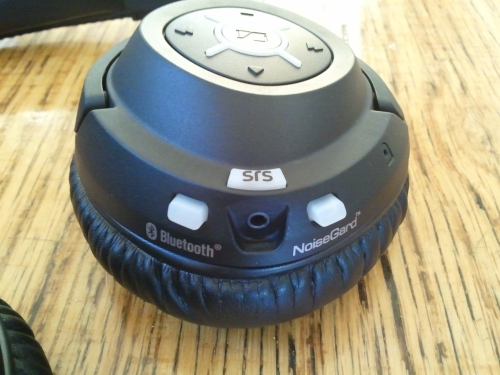 We scored a hands-on, or perhaps that’s an ‘ears-on’, with the Sennheiser MM550 stereo Bluetooth noise-canceling headphones last month. That quick listen got our eardrums all excited, and Sennheiser was kind enough to loan us an MM550 so that we could get better acquainted. For the specs and general info, check out our earlier hands-on with the MM550. In this review we’ll dive into more detail on the physical, technical and sonic aspects of the MM550.
We scored a hands-on, or perhaps that’s an ‘ears-on’, with the Sennheiser MM550 stereo Bluetooth noise-canceling headphones last month. That quick listen got our eardrums all excited, and Sennheiser was kind enough to loan us an MM550 so that we could get better acquainted. For the specs and general info, check out our earlier hands-on with the MM550. In this review we’ll dive into more detail on the physical, technical and sonic aspects of the MM550.
First impressions of the Sennheiser MM550
The MM550 is marketed and priced as an ultra-premium headset, so we were expecting something special when opening the brown FedEx box that arrived at theONbutton HQ. We were greeted by a smart looking store-friendly retail package, which was easy to open without a knife (yay!). Hiding inside was the MM550 itself and a soft pouch containing 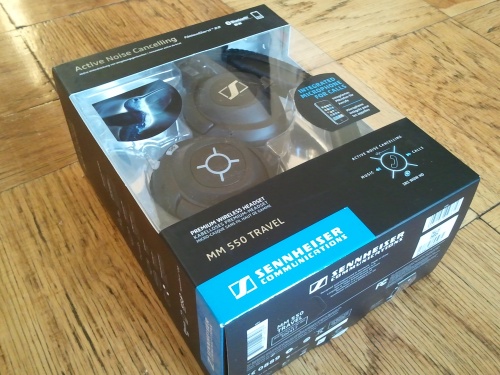 a USB cable, headphone cable and charger with several international adaptors; Sennheiser really is expecting some serious jetsetters to buy this headset. Given the pricing of the MM550 and it’s billing as a do-everything set of cans, it’s good to see that Sennheiser included a good range of travel accessories.
a USB cable, headphone cable and charger with several international adaptors; Sennheiser really is expecting some serious jetsetters to buy this headset. Given the pricing of the MM550 and it’s billing as a do-everything set of cans, it’s good to see that Sennheiser included a good range of travel accessories.
The MM550 feels good to hold; for a closed back set of headphones the MM550 is light but evidently well made. The fitting mechanism on the headband is smooth and the headband itself has a decent amount of flex, giving the impression that it will be easy to get the MM550 to sit comfortably on the head. The ear arms fold inwards to make the MM550 more portable. The ear pads have a very soft cushion that closes around the ear helping to reduce ambient noise and making the MM550 handy in the cold, windy New York winter climate. The closed back design of course also allows for larger drivers to be placed within the ear pads.
The right ear pad houses all of the MM550’s controls; power/play/pause, track skip, volume, noise canceling, Bluetooth and the SRS WOW HD enhancer are all controlled from here. On the left ear pad a Sennheiser logo takes pride of place, presumably enclosing the MM550’s rechargeable battery. The micro-USB charging port is also on this ear pad.
Using the Sennheiser MM550
The MM550 paired without issue with the Samsung Epic 4G and BlackBerry Bold 9700. Both of these smartphones support A2DP (stereo audio streaming over Bluetooth) and AVRCP (remote playback control over Bluetooth), so they were ideal candidates for testing the MM550. In both cases, the MM550 technically functioned perfectly. Playback and volume controls worked as expected, and I never needed to re-pair the MM550 during the testing period.
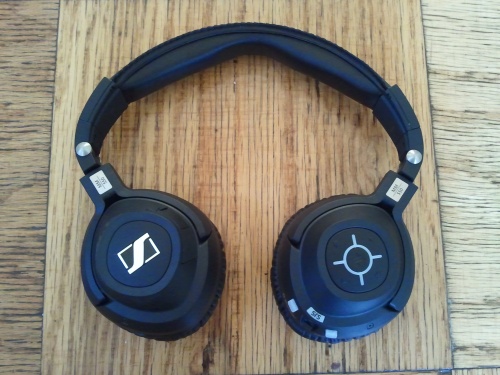 Call quality on the MM550 was excellent, and the headset distinguished itself by being the only stereo Bluetooth headset I’ve used outdoors where callers say they can hear me clearly. Due to the microphone’s placement all the way back at the ear, most stereo headsets have difficulty picking up spoken words. The one issue I encountered outdoors however was that the microphone did pick up some street noises too prominently; callers still said they could hear me but that the street noises were also very audible in these cases. Indoor call quality with the MM550 was excellent. As you would expect, the MM550 interrupts music playback when an incoming call arrives and takes you back to the music when the call is over.
Call quality on the MM550 was excellent, and the headset distinguished itself by being the only stereo Bluetooth headset I’ve used outdoors where callers say they can hear me clearly. Due to the microphone’s placement all the way back at the ear, most stereo headsets have difficulty picking up spoken words. The one issue I encountered outdoors however was that the microphone did pick up some street noises too prominently; callers still said they could hear me but that the street noises were also very audible in these cases. Indoor call quality with the MM550 was excellent. As you would expect, the MM550 interrupts music playback when an incoming call arrives and takes you back to the music when the call is over.
The noise-canceling features of the MM550 has been well thought through by Sennheiser’s engineers. The MM550’s noise-canceling technology, called ‘NoiseGard 2.0’, does its business without introducing noticeable sound effects into the music. That’s a bigger complement than it may appear, as many noise-canceling systems introduce hiss or significant coloration but this is not a problem with the MM550. The MM550s however do not completely block out external sound, but they did a good job of significantly reducing ambient noise on the New York subway and made listening to quiet content such as podcasts much more pleasurable during a typically noisy journey. The noise-canceling also allows you to hear content better without needing to cranking the music up to 11.
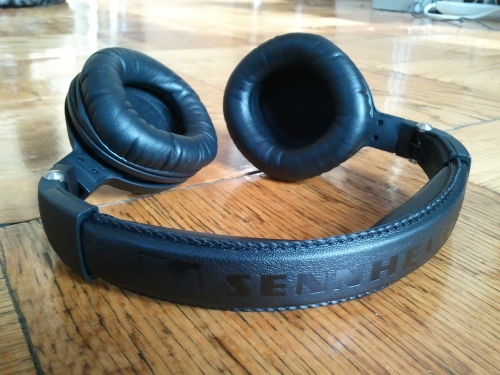 One interesting feature of the MM550 is that when the noise-canceling button is pressed, the microphone activates and passes external sound through the headset instead of music playback. Sennheiser calls this ‘TalkThrough’. So if you’re listening to music in a store for example and then get to the register, by pressing this button you can have a normal conversation without needing to take off the headset. The Plantronics BackBeat 903 has a similar feature, and it’s nice to see it being implemented on other headsets.
One interesting feature of the MM550 is that when the noise-canceling button is pressed, the microphone activates and passes external sound through the headset instead of music playback. Sennheiser calls this ‘TalkThrough’. So if you’re listening to music in a store for example and then get to the register, by pressing this button you can have a normal conversation without needing to take off the headset. The Plantronics BackBeat 903 has a similar feature, and it’s nice to see it being implemented on other headsets.
So how does the MM550 sound with music? Listening to consumer headphones is often a subjective experience; increasingly people prefer a more bass heavy delivery and consumer headphones have been moving in that direction in recent years. The MM550 is designed to give a balanced delivery of the music, with the SRS WOW HD enhancer
available to provide some extra sparkle if you want more excitement from your content. I’m not a fan of adding enhancers to headphones or amplifiers, because from my experience good headphones and amps are able to give a good sound delivery without needing enhancement. But consumers generally expect some kind of enhancer or bass boost, so these things exist as a result.
With the SRS WOW HD enhancer off, the MM550 does deliver a reasonably balanced sound with a slight accentuation of the upper vocal frequencies at the expense of some of the lower midrange. The bass is punchy and there are plenty of highs, so this slight lack of lower midrange produces a very open sound that doesn’t suffer from any muddiness. It also means that some vocals can tend towards thinness, even sounding a little harsh sometimes. Pop, dance and Jazz 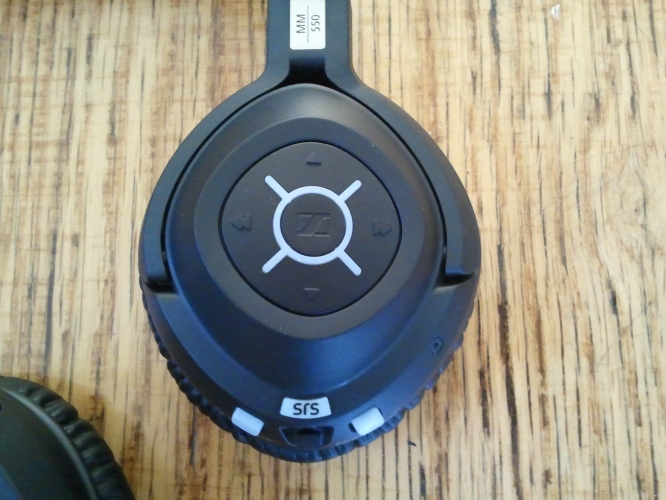 sounded great in my listening time with the MM550. The bass in Mylo’s Drop the Pressure drove the track with energy and Uniting Nations’ Ai No Corrida bounced along with real verve. It was with Country music that the MM550 tended to produce occasionally harsh female vocals and guitars.
sounded great in my listening time with the MM550. The bass in Mylo’s Drop the Pressure drove the track with energy and Uniting Nations’ Ai No Corrida bounced along with real verve. It was with Country music that the MM550 tended to produce occasionally harsh female vocals and guitars.
Turning on the SRS WOW HD enhancer, the bass became really solid on the MM550. Dance music powered through the ear pads in a superb way and without sounding muddy. The enhancer adds significant amounts of midrange boost however, which can sound harsh on some music genres after extended listening. So while the SRS WOW HD enhancer gives an instant “wow”, as I experienced during my initial hands-on, I tended to enjoy the MM550 for longer periods with it switched off.
The MM550 can also work as a regular set of cabled noise-canceling headphones. In this mode the MM550 sound almost identical to when they’re connected over Bluetooth. The sound is perhaps slightly clearly, but the difference is almost imperceptible. The MM550 ship with a regular stereo cable rather than a three ring hands-free cable, so they can only be used as a hands-free cellphone headset when connected over Bluetooth.
The MM550 has one noise-canceling quirk, whereby the noise-canceling circuit momentarily disengages when switching from one music track when you’re listening to a playlist. It’s not a big issue, but is just a little odd because the silence breaks for a split second while you’re in a break between tracks.
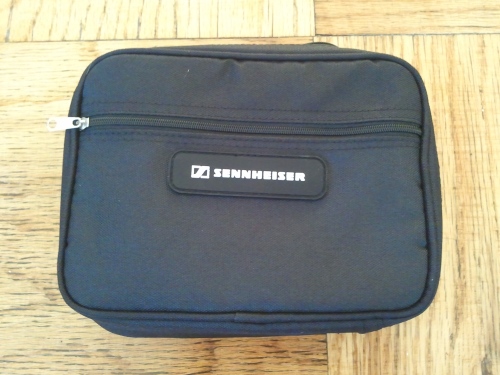 Sennheiser quotes 8 hours of stereo Bluetooth music playback with noise-canceling for the MM550. Although I did not track my exact listening time with the MM550, I only needed to charge the headset once during my testing and I listened to it extensively. It felt like Sennheiser’s battery claim is ballpark accurate. Various factors will impact battery life with wireless products, so it’s difficult to really assess claims. For example a headset will have to work harder to maintain a connection if the device it’s talking to is at the limit of its reception range. Also, switching a headset on and off uses proportionately more battery life because the headset has to expend significant energy searching for a connection. When a stable connection is secured, the power usage reduces.
Sennheiser quotes 8 hours of stereo Bluetooth music playback with noise-canceling for the MM550. Although I did not track my exact listening time with the MM550, I only needed to charge the headset once during my testing and I listened to it extensively. It felt like Sennheiser’s battery claim is ballpark accurate. Various factors will impact battery life with wireless products, so it’s difficult to really assess claims. For example a headset will have to work harder to maintain a connection if the device it’s talking to is at the limit of its reception range. Also, switching a headset on and off uses proportionately more battery life because the headset has to expend significant energy searching for a connection. When a stable connection is secured, the power usage reduces.
Can the Sennheiser MM550 justify its premium price?
Overall the Sennheiser MM550 is an excellent headset. That does need to be put into the perspective of its extremely high MSRP of $649, which currently translates to around $499 on various online retailers. If you can live with the MM550 as your only headset for noise-canceling, stereo Bluetooth streaming and cabled duties then you might be able to justify its premium over other closed back designs. It does pretty much everything very well, but whether it does it hundreds of dollars better than the competition is a difficult call.
Neil Berman
EFO iPazzPort multitouch review
 So far we’ve reviewed each EFO iPazzPort model revision and enjoyed seeing this cute mini-controller develop into an excellent product. One of our wishes of previous models was for EFO to add multitouch capability to the iPazzPort. Well EFO has been listening because lo and behold the latest iPazzPort is multitouch aware.
So far we’ve reviewed each EFO iPazzPort model revision and enjoyed seeing this cute mini-controller develop into an excellent product. One of our wishes of previous models was for EFO to add multitouch capability to the iPazzPort. Well EFO has been listening because lo and behold the latest iPazzPort is multitouch aware.
 Much of this fourth generation model is identical to the third gen, so have a look at our review of that iPazzPort for a more detailed look at this wireless controller. Cosmetically they both look the same, with identical key layouts and black or white color choices. The key feel is the same, with rubber keys giving a decent typing experience if not quite at the BlackBerry level of feedback.
Much of this fourth generation model is identical to the third gen, so have a look at our review of that iPazzPort for a more detailed look at this wireless controller. Cosmetically they both look the same, with identical key layouts and black or white color choices. The key feel is the same, with rubber keys giving a decent typing experience if not quite at the BlackBerry level of feedback.
One interesting change is that the fourth gen iPazzPort stays awake constantly, whereas the third gen model would go to sleep after a short time to save battery. There are pros and cons to each approach. The third gen model can definitely go longer between charges if you’re only using it occasionally, but it needs a wake-up key press when used after a few minutes. Perhaps owners were complaining that the trackpad wasn’t responding, when they needed to press a key to wake the controller. Whatever the situation, the fourth gen is constantly available which is nice, but needs more frequent juice-ups as a result.
So how is the multitouch on the new iPazzport? Well it just worked straight out of the box with Windows 7. Two finger web page scrolling with the iPazzPort was great, although Windows does not provide quite as fluid an experience as Mac OSX – but that’s an issue with Windows rather than the iPazzPort.
The addition of multitouch makes the new iPazzPort an even more usable wireless controller for a living room HTPC. Plus with third gen’s other features like the laser pointer and access to incidental and function keys remaining intact on the new model, EFO has a strong device on offer here.
Neil Berman
Kinect for Xbox 360 review
 Arms a-flailin’, legs a-kickin’ and heads a-bobbin’. That’s the view that Kinect gets as you and your pals progressively lose your inhibitions.
Arms a-flailin’, legs a-kickin’ and heads a-bobbin’. That’s the view that Kinect gets as you and your pals progressively lose your inhibitions.
The genre of action gaming, made groundbreakingly popular by the Nintendo Wii, has taken a while to migrate to the Xbox and PS3. Finally with Sony’s Move and Microsoft’s Kinect, the wait is over. So has the wait been worth it?
First impressions of the Kinect
The Kinect ships in a thankfully small box, which is easy to carry home for instant gratification purposes. Inside the box, the Kinect sensor takes up most of the space, with a setup guide, the Kinect Adventures game and a one piece cable with power and USB connectors in there as well.
The Kinect sensor is actually smaller and more premium looking than I was expecting. It’s a glossy black plastic affair, with a rubberized base that helps it perch on top of your favorite TV. The main unit is connected to the base with a little silver neck.
The setup guide is easy to follow and installation took just a few minutes as the Kinect progressed to calibrate itself by looking around and listening to ambient noise in the room. An automatic update was also downloaded during the installation process. After that I was all set.
Using the Kinect
When you start up an Xbox 360 with the Kinect installed, the regular dashboard appears and then the Kinect needs another few seconds to start up. You can then interact with the Kinect by waving a hand in the air or by talking to it. Both methods work well, but the voice control likes a quiet room to help the Kinect to understand what you’re saying.
The regular dashboard scoots away and the Kinect dashboard, or Hub as it’s known, appears. From within the Hub you make selections either buy holding your hand steady over a tile for a couple of seconds or speaking the name of the tile you want to engage. I expect most people will choose hand waving, unless you have a quiet room in which case vocal instructions are a viable option. The hand waving is intuitive and easy to use; the first time I tried, I didn’t hold my hand steady for long enough and the selection didn’t engage. But when you get used to sticking a steady hand in the air it becomes second nature.
Once you’ve engaged the Kinect into action, we hit the first hitch. Unfortunately only a few of the Xbox’s capabilities are available through the Kinect Hub. You can access the game disc currently in the drive, a very limited amount of DLC such as ESPN and some other video content, but that’s pretty much it. There’s no access to Netflix or the remaining bounty of good stuff we’ve come to love from the living room friendly world of Xbox.
I would expect that the Xbox dashboard and Kinect Hub will converge in time as more Xbox apps become compatible with the Kinect. But at the moment it feels like we are in the dangerous territory of having two parallel software interfaces coexisting on the platform.
I’ve been using the Kinect with two launch titles: Dance Central, which seems to have been the most popular title so far and Kinect Adventures, which ships with the Kinect. I’ll start with Dance Central, which is a dance game that fills the dual role of being both amazingly good fun and getting you in shape.
Dance Central includes a decent selection of songs that have their own dance moves. As you progress through the game learning the moves, the Kinect tells you how good your dancing is and is very responsive to your movements. You can slow down the action if you’re having difficulty nailing a particular step.
What makes Dance Central so amazing is that I completely forgot that the Kinect sensor was even there. I felt like I was interacting with the game tutor in my own private dance class. There was nothing to hold or wave, no sensor mats to walk on, nothing strapped to my body relaying information. The beauty of the Kinect is that when games work well, they’re wonderfully immersive.
After a good shot of not dancing very well, but sweating profusely, I turned to Kinect Adventures. This bundled game is a collection of simple active games that do a good job of showcasing the Kinect’s ability to track multiple players with fun games. There are five mini games in Kinect Adventures that all require active play. Kinect Adventures is a mild to very active game; at the extreme end of the scale Reflex Ride will have you jumping constantly to propel a cart, while dodging obstacles in your path. It’s a non-stop sweat ride, in a good way.
Some of the games, like Rallyball, demonstrate how Kinect can sense the arrival of a second player and turn a game instantly from being a one player into a two player game. It’s seriously cool to see your avatar walking into the Rallyball court and just start to play alongside the existing player. You can then walk off and the game continues, but with one player.
Kinect Adventures lacks the depth of Dance Central, but is a more immediate and better party game. It’s also free with the Kinect, and plays better than you might expect of a free game.
Some Kinect downsides
Let’s get the obvious one out of the way first. If you’re expecting the Minority Report experience (I wasn’t but I continue to live in hope), then brace yourself for disappointment. Precogs do not ship with the Kinect at this time. Joking aside, the hand gestures work well but lack the fluidity of the Minority Report aspiration. Ultimately the Kinect sensor has to be able to figure out if you just waving your hand or actually performing a gesture, so the couple of second confirmation period makes sense.
Occasionally the Kinect sensor became confused when two players were in the room. Sometimes it would give menu control to player one and on other occasions it would switch to player two. Not a biggie, but inconsistent.
Speaking of rooms, now we know why the early demos were done in such spacious environments. Kinect likes a spacious room. The setup guide asks for the Kinect sensor to be 6ft away from you for one player games and 8ft away for two players. That’s a stretch in my New York City shoebox, and it’s worth bearing in mind if you’re planning to buy the Kinect to use it in a small room. The distance from my TV to my sofa is just over 8ft and we were able to play one and two player games fine; although during two player games the Kinect occasionally asked one of us to move backward if we started edging forwards during the limb-waving hysteria.
Does Kinect raise the bar for action gaming?
Overall my Kinect experience has been hugely enjoyable. Aside from a couple of minor issues, I’ve been immersed into the game environment in a way that could only be bettered by Tron. Graphically we seem to be a little stuck in Wii-world, so I’d love to see a Call Of Duty for Kinect. That would take the experience to a whole new level altogether.
Neil Berman
Er…is it meant to do that? (Windows Phone 7 edition)
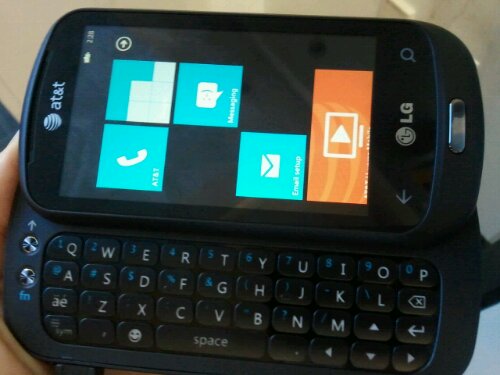
Don’t y’all try using that WP7 home screen in landscape mode…




























































